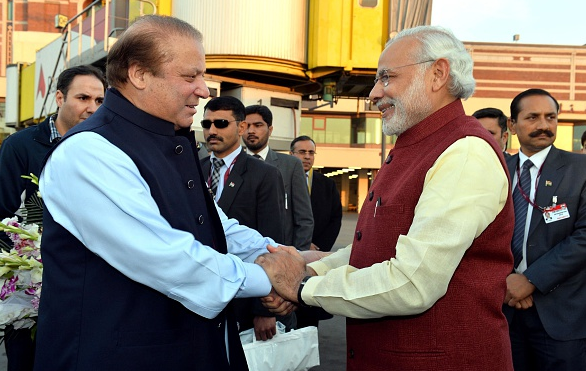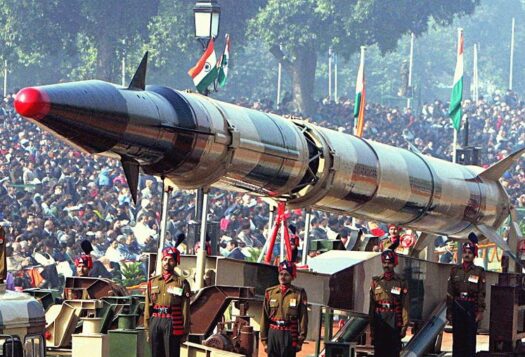
Anniversaries of significant events are customary occasions for making assessments about the past and recommendations for the future. This May, as we mark the paradigm-shifting nuclear tests on the Indian subcontinent, assessments should not only focus on India and Pakistan’s nuclear deterrence, but also nuclear confidence-building. The India-Pakistan nuclear confidence-building process has been languishing in recent times and needs a fresh approach. A strategic nuclear dialogue mechanism as well as a joint nuclear lexicon could become meaningful and promising nuclear confidence-building measures (NCBMs) between the two countries.
Taking stock
Nuclear confidence-building in South Asia preceded the phase of overt nuclearization by at least a decade. The 1988 Agreement on the Prohibition of Attack against Nuclear Installations and Facilities — signed in the aftermath of the Kahuta attack scare and Operation Brasstacks — indicates an early understanding between India and Pakistan that the risk of nuclear conflict would have to be controlled through institutional mechanisms. At the breakthrough political meeting between Vajpayee and Sharif in Lahore in February 1999, less than a year after the tests, the nuclear weapons issue had to be carefully woven into the agreement. Accentuated by the experiences of the Kargil War, the Lahore Declaration and Memorandum of Understanding identifies the need to undertake appropriate CBMs to address nuclear and conventional relations between the neighbors.
In South Asia, the emphasis is on confidence-building as a process, through the establishment of sustained high-level dialogues, institutionalized cooperation in multiple fields, and comprehensive engagement through official channels as well as informal structures and personal relationships (Baviera 2001). The hotline between the Director-Generals of Military Operations(DGMOs), as well as between the foreign secretaries, the Agreement on Pre-Notification of Flight Testing of Ballistic Missiles, the Agreement on Reducing the Risks from Accidents Relating to Nuclear Weapons, and the foreign secretary-level and expert-level talks have constituted major instruments of bilateral nuclear confidence-building under the guiding framework of the Lahore Declaration. These NCBMs are no mean feat, yet they represent only limited success in terms of confidence-building. The periodic extension of existing agreements maintains status quo, but lacks any major breakthrough in functional and institutional measures.
India-Pakistan NCBMs get embroiled in the rhetoric of the Lahore Declaration, restricting moves toward new initiatives. Using trust deficit as an excuse for rejecting joint cooperation mechanisms is a classic chicken and egg dilemma. NCBMs by themselves may not be able to diffuse conflict or reduce tensions, but they are tools of foreign policy that are employed to reduce the risks emanating from deliberate or accidental nuclear exchange. NCBMs are not insulated from conventional military CBMs or from the hostility that inhibits confidence-building between the two countries. The identification of appropriate issue linkages—nuclear to nuclear and nuclear to conventional—can bring out bargains that are not necessarily symmetrical in terms of quality, but similar in terms of the quantity of mutual confidence built in the bid.
Making proposals
The confidence-building approach suggested by the Lahore Declaration has greater psychological than practical imperatives. To make appropriate issue linkages and enable across-the-spectrum engagement, India and Pakistan should proceed to a strategic nuclear dialogue. A strategic nuclear dialogue would be a more structured and institutionalized form of dialogue with emphasis on the implementation of measures. Such a dialogue would regularly review existing institutional mechanisms to implement agreements and call for new mechanisms whenever needed. An institutionalized dialogue would also offer experts from both sides a seat alongside political leaders. The fear that this could be unsuitable for nuclear confidence-building, since it adds too many cooks, may be unfounded. Instead, a strategic dialogue mechanism filters out unnecessary elements in terms of participants, issues, and pre-conditions that often inhibit confidence-building processes.
India sees Pakistan’s outright rejection of the declaration of an official nuclear doctrine as a major impediment to building mutual trust and confidence. Apart from the strategic logic that forbids Pakistan to do so, the demand for such a declaration escapes the logic of bilateral CBMs. Such a demand appears to ask Pakistan to unilaterally concede what it considers an advantage—an undeclared, therefore ambiguous, nuclear posture and policy—in return for no gains. Bilateral CBMs work on the logic of symmetric concessions from both parties. Therefore, unless India has something as strategically significant to offer as what it demands, a bargain cannot be struck. One way of getting past this stalemate, as I have argued before, is through the creation of a nuclear lexicon or nuclear glossary. Besides reducing misunderstandings of nuclear terminologies, the nuclear glossary would also compel the two countries to share a nuclear vocabulary that expresses their nuclear policies and postures. As a confidence-building measure, this would also encourage India and Pakistan to standardize their language on nuclear weapons to facilitate better dialogue.
These prescriptions come with flaws, complications, and exceptions. Broad, unspecified, and limited NCBMs risk the danger of stagnation and reverse-damage. They need careful assessment and tailoring to fit the prevailing strategic environment.
********
Eighteen years ago this month, India and Pakistan surprised the international community by testing nuclear weapons within weeks of each other. In the aftermath of the tests, the two countries formulated a set of confidence-building measures to mitigate risk and enhance strategic stability. But how effective have these initiatives been? Have they managed to achieve their objective or is a new approach needed? SAV contributors Arka Biswas, Sitara Noor, Sobia Paracha, and Tanvi Kulkarni will explore some of these themes in this series. Read the entire series here.
***
Image: Anadolu Agency, Getty


